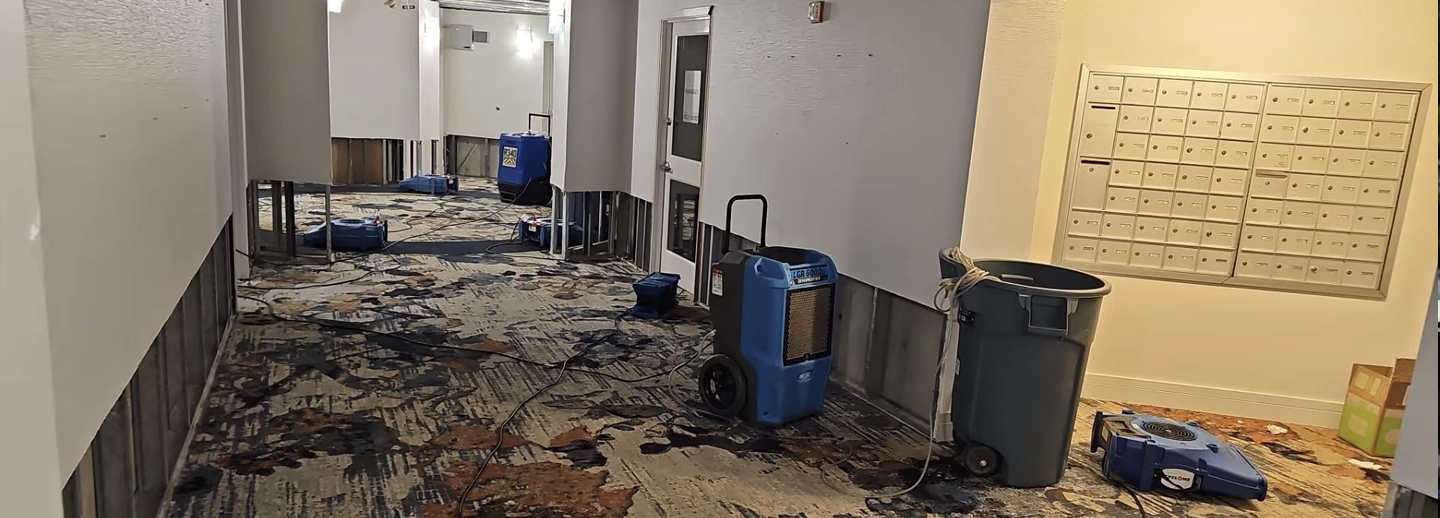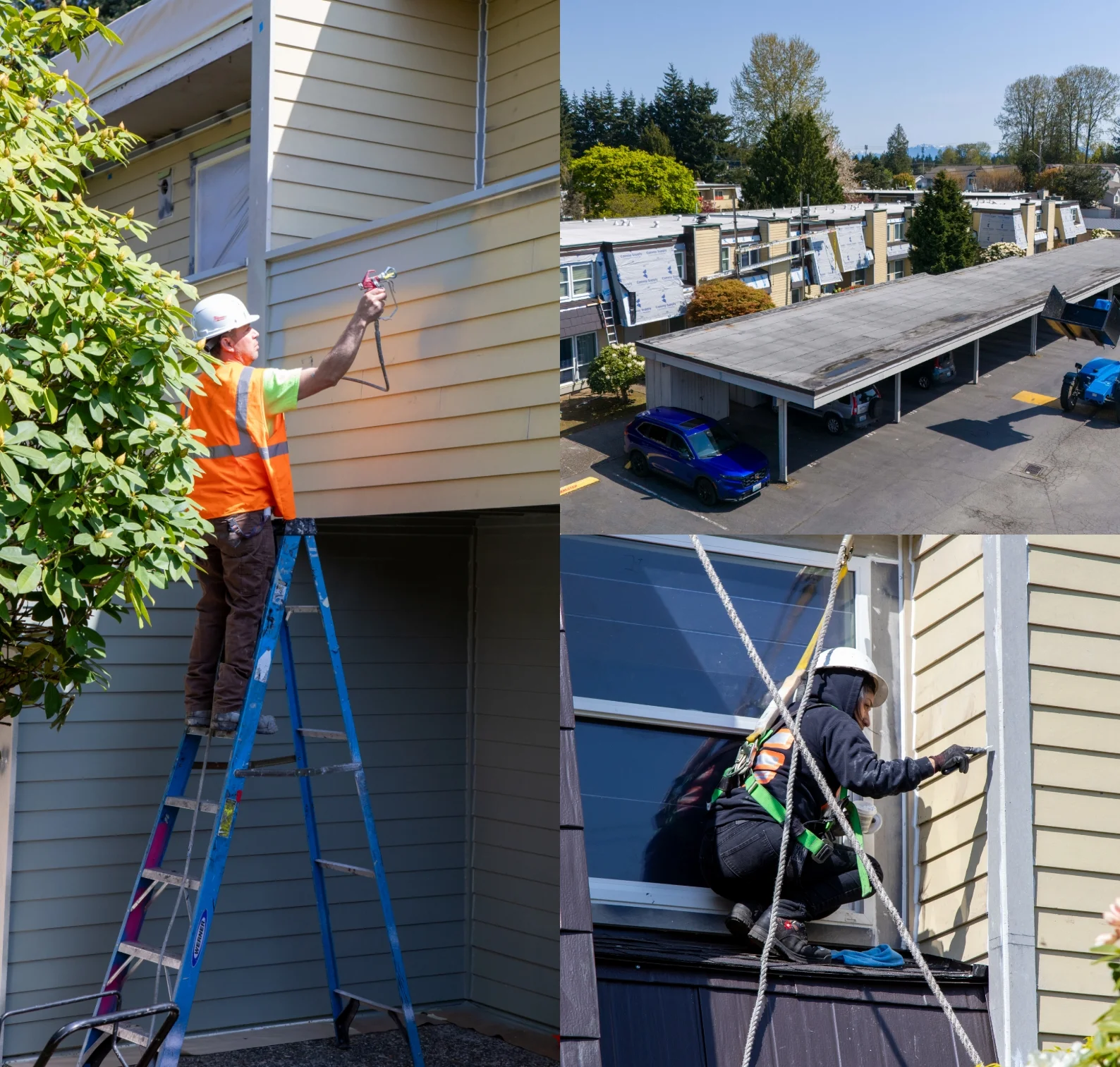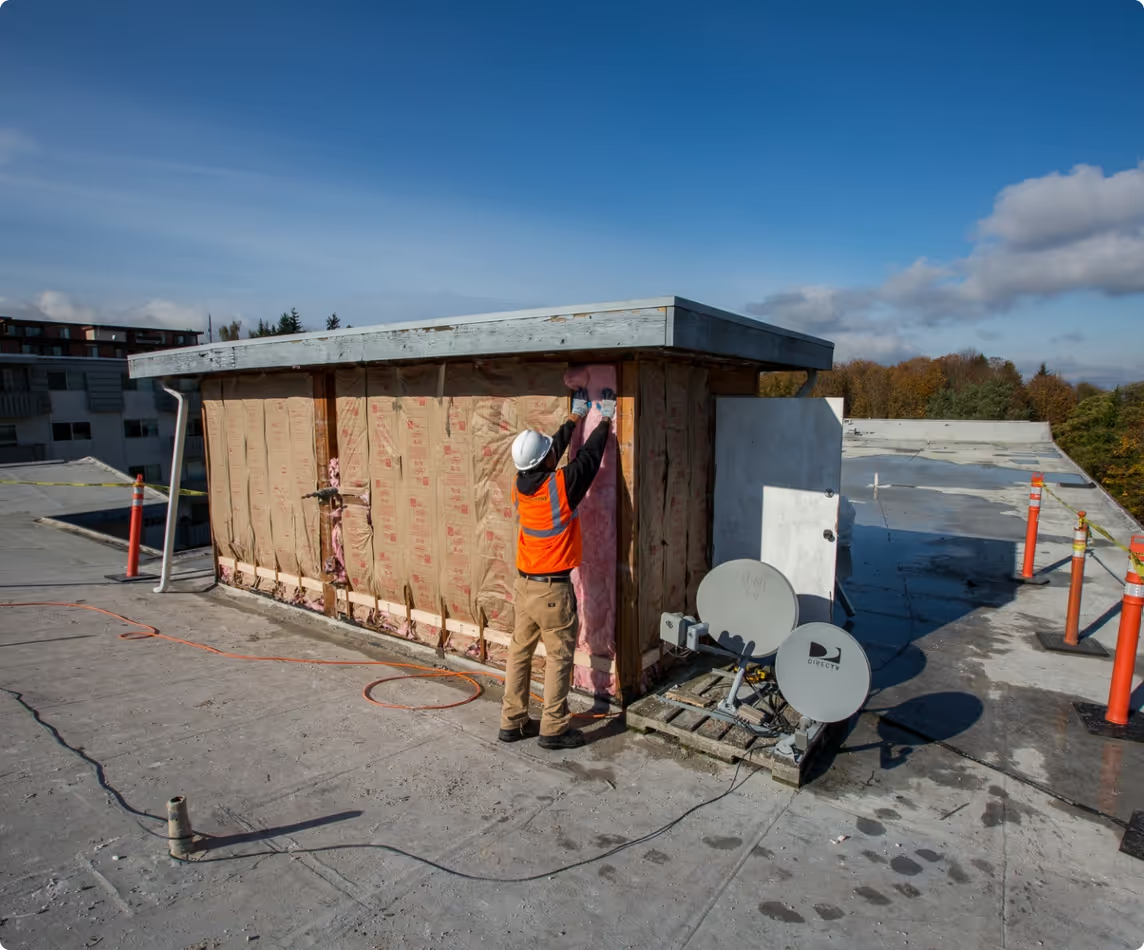Emergency Services: FAQ & What to Expect
What can you expect after your call for emergency services? What happens while we are working to prevent damage and what are the next steps towards restoration?

What can you expect after your emergency call?
1. Arrival & First Steps
- Arrival Timing
We do our best to arrive within an hour. If the situation is not urgent, we may schedule the visit for the next day or so. - Locate the Source
We find and address the source of the leak. Sometimes, we may need to return for further investigation or small demolition (“leak investigation demo”). For this, you’ll need to sign a Work Authorization Form. - Remove Damaged Material
Sometimes it is necessary to remove damaged materials depending on how big the damage is and the moisture levels. Before any removal, we will perform an asbestos test. - Asbestos Hazards
If the test is positive, an abatement subcontractor will handle the removal safely before we continue mitigation.
2. Setting Up Drying Equipment
- Dry it Out
If moisture readings taken with the MMS3 moisture meter show that drywall, flooring, or structural wood are wet, we set up drying equipment. - Monitor Progress
We will visit daily or every other day to monitor moisture levels.
3. Finishing Mitigation
- Remove Drying Equipment
Once the materials are dry, we remove the equipment. - Submit Documentation
Our field crew then sends all documentation to our office.
More About Water Mitigation
What to Expect During the Drying Process
After our technicians have completed the initial setup of drying equipment, your property is in the drying phase of mitigation. During this time, our goal is to safely and efficiently remove all remaining moisture to prevent further damage or mold growth.
Keep the Equipment Running
Please do not turn off or unplug the drying equipment. The fans and dehumidifiers are designed to run continuously until our technicians confirm that all affected areas have reached normal dry standards. Turning them off—even for a few hours—can significantly delay the drying process or cause moisture to return.
What to Expect at Home
- The equipment will run 24/7 and may generate noticeable noise or warmth.
- It’s safe to remain in your home during drying, but please keep children and pets away from the affected area and equipment.
- Avoid moving or adjusting any fans or hoses—they are positioned to maximize airflow and efficiency.
Ongoing Monitoring
Our team will return regularly to:
- Take moisture readings using professional-grade meters (like the MMS3 and hammer probe).
- Adjust or remove equipment as drying progresses.
- Ensure all materials (drywall, subfloor, framing) are drying properly.
Once readings show dry standards are met, we’ll remove all equipment and clean the area thoroughly.
Next Steps
After drying is complete:
- A project manager will prepare a mitigation invoice.
- We’ll coordinate with your HOA to discuss repair estimates and timelines.
- You’ll be informed of any additional steps needed before repairs begin.
Questions?
It’s normal to have questions during this process—our team is here to help.
If you notice anything unusual (like equipment turning off, new water spots, or increased humidity), please contact us right away.
FAQ
- Why did you leave fans and dehumidifiers running?
The equipment helps remove moisture trapped in walls, flooring, and framing materials. It must run continuously to dry everything properly and prevent mold or further damage. - Can I turn the fans off ?
Please don’t turn them off—even for a short time. Shutting down the equipment can slow the drying process or cause moisture to return, which could lead to additional damage. - Is it safe to stay in my home while the equipment runs?
Yes, it’s safe. The equipment may be a bit noisy and create extra warmth, but it’s not harmful. Just make sure to keep children and pets away from the affected areas and avoid touching or moving the equipment. - How long will the drying process take?
Every situation is different, but most drying phases take 3–5 days. Our technicians will monitor progress regularly and let you know when everything has reached dry standards. - When will someone come back to check the equipment?
Our technicians will return every 24–48 hours to take moisture readings, make adjustments, or remove equipment as needed. We’ll also update your property manager or HOA with progress reports. - What happens after the drying is done?
Once all materials are dry:
1. We’ll remove the equipment and clean the area.
2. A mitigation invoice will be created.
3. We’ll coordinate the next steps for repairs. - Who do I contact if I have concerns?
If you notice equipment has stopped running, see new water spots, or have any questions, please contact us right away. We’re here to help throughout the entire process.
More Information
Timing & Project Queue
We often manage many projects at the same time. Homes where tenants had to move out are given priority. Your project may wait in the queue, but we’ll keep you updated.
If You Live in a House (Not a Condo)
For single-family homes without HOA involvement, please give us a call directly. We will guide you through the mitigation and repair process step by step.

Building Relationships, One Project at a Time
We treat every project as a chance to build lasting relationships with our clients. Our commitment to excellent craftsmanship and honest communication has gained us long-term, repeat clients and partners. Learn more about what makes McLeod Construction special.

Questions or Bid Requests
Reach out to McLeod Construction for inquiries, consultations, or to discuss your project needs.

